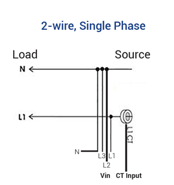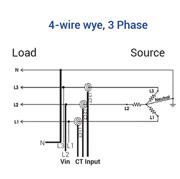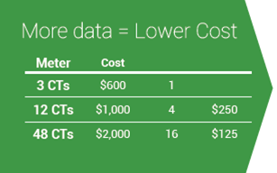Before delving into the importance of granular data for power metering, it is essential to understand why a submeter is used. Submetering provides the ability to monitor the actual energy usage of individual tenants, departments, or pieces of equipment in real time. It allows for measuring electricity on a more granular level than the building's main utility meter. With submetering, the user can determine system efficiency and identify equipment problems, thereby better understanding trends and energy usage. This is useful for:
- Certifications like LEED and Green Building
- Equipment Optimization
- Financial incentives and savings opportunities
- Demand side management
What is a Load?
A load is an electrical component or portion of an electric circuit that consumes electric power. Some examples of loads include:
- Lighting
- HVAC system
- Chiller
- Refrigerator
Single Phase vs Three Phase
Single phase is a power system where voltage runs sinusoidally in unison. There is one measurement wire and if measuring single phase, only one CT is needed around the corresponding wire.
 Three phase loads have voltages that operate sinusoidally, shifted 120 from the other voltage. The benefit of three phase is consistency in power delivery and less current draw compared to single phase. Three phase uses 3 measurement wires and is used mostly to submeter large machinery. If measuring three phase, one CT is needed around each of the three wires.
Three phase loads have voltages that operate sinusoidally, shifted 120 from the other voltage. The benefit of three phase is consistency in power delivery and less current draw compared to single phase. Three phase uses 3 measurement wires and is used mostly to submeter large machinery. If measuring three phase, one CT is needed around each of the three wires.
Multi-Load Monitoring with Setra's Meter
Setra's Power Meter can measure both single phase and three phase in the same meter, and the dual voltage input allows measurement of up to 2 different voltages. With the dual-voltage inputs on the 12 and 48 models, users can measure any combination of single, dual, or three phase service up to the amount of CT inputs on the meter. All versions of the Power Meter have data logging capabilities, allowing access to the data for up to 62 days using the web portal software.

To effectively gather the data needed to drive energy savings and mange usage at a load level, a power meter should have multi-load monitoring. As more loads are measured, the cost per load decreases. A meter with multi-load monitoring capabilities provides the granular data that leads to overall savings.


